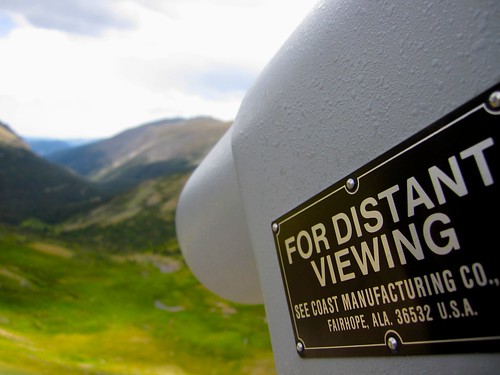I’ve been working on my capstone project for two semesters now, trying to figure out a way to introduce a slice of the outdoor experience to the inside world. Playing, recreating and simply being outside is something that is extremely important to me, and based on conversations with my research participants, important to them as well.
There’s an apparent dichotomy between the richly engaging, dynamically changing outside world, and the rather static, sterile, sensory-deprivation tank that is the typical indoor workspace. Regarding the individual who has established a deep, personal connection to the outdoors, or to nature, or to wilderness, how do we improve the quality of life for this person if they have to spend most of their waking hours in an indoor built environment? What sort of experiential qualities are present in an outdoor setting that we can appropriately introduce to an indoor space? How can we do this in a manner that is still aligned with work and business needs?
My interests are not in arriving at a factual, scientifically objective account of outdoor experience, but rather how outdoor spaces are received by our senses, interpreted in our minds, and ultimately made meaningful to us. Mine is a phenomenological approach, where I am concerned with the experience of direct realism. How does nature reveal itself to our consciousness? How does our consciousness interpret the outdoors, and regard it as meaningful? How is the situatedness of the individual, from their perceptual capabilities, to their social and cultural values, to their memories and lived experiences, how are these evoked by a particular experience, and how do they determine how the individual interprets it?
The goal of my capstone project is to establish a series of high-level design principles that help to guide interaction designers who find themselves trying to evoke a sense of the outdoors in an indoor space. I do not precisely know yet what these principles will be, but a few possible threads have bubbled to the surface.
The Biological Thread
Most animals have what is called a circadian rhythm, a biological clock that runs on a 24-hour period and determines when an organism wakes up, does certain activities, and goes to sleep. Animals still heed to this internal clock even when deprived of external stimuli, such as the movement of the sun and changes in temperature, and humans are no exception. Despite artificial lighting and built environments, we are still inexplicably bound to this rhythm.
The circadian rhythm is clearly an evolutionary response to the 24-hour day of our planet, and in this way our biology is not only situated in, but largely determined by our environment. Our biological nature is born from the nature of the Earth itself, and its subsequent rhythms. Indeed, the natural length of a day is inescapably woven into the biology of our own humanity.
It goes further than that, however. Lakoff and Johnson have done extensive work demonstrating that our use of language, and our thoughts themselves, are tightly coupled to a series of primary metaphors that rise out of our experience with our own bodies. The foundation of human thought is bound up not in some kind of disembodied rationality, argue Lakoff and Johnson, but is rather determined by our own embodied cognition. We talk of purpose as a destination, time in terms of motion, and things that are similar as being close together. These are not just convenient linguistic phrases, but are the very foundation of how we structure and make sense of the world.
Our perceptions and subsequent rationalism are a product of our own embodiment, and our embodiment is a product of our biology. Since our biology evolved in response to the inescapable rhythms of the natural world, it would seem that a connection to the outside world is an undeniably important component of our humanity. To deny the rhythms of the outside world is to deny the very thing that makes us human.
As humans we are unavoidably situated in our biology, which influences how we perceive, categorize and make meaning of the world. A design that aims to communicate a sense of the outdoors must consider the biological connection that makes the natural world intrinsically meaningful to us.
The Cultural Thread
A longstanding claim has been that it is reason, our unique access to a transcendent and objective reality, that distinguishes humans from other animals. The implications of Lakoff and Johnson’s work, that rationality is not disembodied but is rather a product of our own embodiment, stands to elevate other uniquely human activities such as culture and art to a similar level as reason.
This is certainly not to undercut rational thought, which remains an incredibly powerful tool that, in the case of quantum mechanics, continues to unearth a world that is in direct violation of our common-sense notions of direct realism. It is, however, to demonstrate that reason is not the privileged, disembodied force we may think it is, but is rather determined by the unique nature of our own humanity. If reason (that is, human reason) is one important capability that make us uniquely human, than our other capabilities such as culture and art may be equally important, despite their subjective nature.
Our relationship with the outdoors cannot be described fully in a purely biological, or purely rational, account, as our social and cultural experiences influence our attitudes towards the natural world as well. There is biological precedent for our connection, but the way we ultimately make meaning and form relationships with the outdoors will be highly dependent on the culture we are situated in, and the experiences with the outdoors that we have collected.
As a designer, it is inappropriate to assume that everyone will interpret a palm tree in the same way, or a cactus, or a coniferous tree. For a person in the midwestern United States a palm tree might signify a faraway exotic place to spend spring break, whereas for a person in Florida it may represent just another damn tree. Someone who lives in the mountains may not have the same appreciation for their local topography as someone who grew up in the plains.
The values we associate with the outdoors are heavily influenced by the society and culture we inhabit. A design that aims to communicate a sense of the outdoors must consider the sociocultural relationships its users have with the natural world, and how (or if) it intends to change them.
The Temporal and Perceptual Thread
The natural world changes slowly, often at a rate below immediate human perception. We notice the leaves changing in autumn, but you can’t sit down and literally watch the leaves change. The sun moves across the sky throughout the day, the days get longer or shorter depending on one’s latitude and the time of year, and the phases of the moon change. There are, however, changes that we can perceive, such as wind blowing, clouds moving, rain falling, and certainly lightning striking nearby.
The indoor world has limited access to these natural processes, but it does possess some of its own. Co-workers arrive in the morning, fetch their coffee, take bathroom breaks, go to lunch, and eventually filter out for the evening. Human Resources may hang holiday decorations depending on the time of year, and the wear-and-tear of the hallway carpet may become a topic of conversation for bored individuals. Indeed, we are ambiently aware of these processes, often without consciously attending to them or deliberately marking them out.
From an informational standpoint the natural world is always communicating its status, albeit at a level below that of immediate human perception. We notice changes from time to time, but we cannot consciously focus and attend to them, because they cannot be actively witnessed by our senses. The sun moves, the phases of the moon change, the trees bud and the flowers bloom, and while all of these channels communicate information about the state of the outdoors, they are far from being distracting or overwhelming. Thus, a design for bringing a sense of the outdoors indoors would do well for capturing and communicating these slow processes in an elegant manner.
However, part of the intrigue of the outside world is the interplay between these longer imperceivable processes, and the more immediate perceivable ones. I can’t sit down and watch the sun move across the sky, but on a partly cloudy day I can tell when it comes out from behind a cloud. I can feel and hear the breeze on a windy day, and while I could just barely perceive that thunderhead bearing down on me, I can certainly feel its drenching rain.
This interplay demonstrates how the processes of nature situate themselves in a multi-scalar, almost fractal relationship. Certain changes are perceivable minute-to-minute, hour-to-hour or day-to-day. Others are only noticeable at larger timescales, such as week-to-week, month-to-month or season-to-season. Still other changes are noticeable from year-to-year. The natural world of course works on timescales far beyond this, beyond the limits of human perception and even imagination, and certain creative designs cast a reflective light on even these vast timescales.
A design that aims to communicate a sense of the outdoors must allow for multiple levels of perception and temporal resolution, utilizing different magnitudes of perceivable change to communicate the multi-scalar cyclic relationships of the natural world.
So that largely summarizes my current work. I’m not sure if these are the actual design principles I’m going to roll with, but a few categories definitely seem to be emerging. I’m deeply interested in a phenomenological standpoint that considers sense-making, sensuality and embodied experience as core to my argument. I have found that a key component to my work is the temporal, multi-scalar, cyclic nature of outdoor processes, as well as the differing levels of human perception of those changes. Indeed, these two principles are tightly woven together at this point, but it may make more sense to split them apart.
I’m already realizing that I need a principle that considers space, such as the way sunlight filters through leaves or how crepuscular rays fill outdoor space, and mapping these to surfaces in the office or dust particles in the air. Nature has an interesting way of rendering space visible in subtle ways and using it to communicate information, and I’m fairly certain I need a principle that captures that. I also aim to further explain my design principles by applying them specifically to light as a design medium, based on my lighting studies.
In Summary
- As humans we are unavoidably situated in our biology, which influences how we perceive, categorize and make meaning of the world. A design that aims to communicate a sense of the outdoors must consider the biological connection that makes the natural world intrinsically meaningful to us.
- The values we associate with the outdoors are heavily influenced by the society and culture we inhabit. A design that aims to communicate a sense of the outdoors must consider the sociocultural relationships its users have with the natural world, and how (or if) it intends to change them.
- A design that aims to communicate a sense of the outdoors must allow for multiple levels of perception and temporal resolution, utilizing different magnitudes of perceivable change to communicate the multi-scalar cyclic relationships of the natural world.




